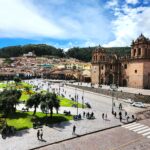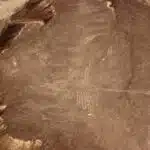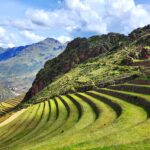The iconic ancient Incan citadel of Machu Picchu is nestled high in the Andes Mountains, above the Urubamba River valley, also known as the Sacred Valley. It’s one of the New Seven Wonders of the World and offers breathtaking views and a fascinating glimpse into Incan history. It is one of the most iconic and well-preserved remnants of the Inca civilization, dating back to the 15th century.
Machu Picchu is located at an altitude of about 2,430 meters (7,970 feet) surrounded by lush green mountains and steep cliffs. By choosing to hike part or all of the way to the citadel, whether on the Inca Trail or another trekking route, you not only experience the natural beauty of the Andes but also appreciate the journey that leads to this extraordinary ancient wonder.
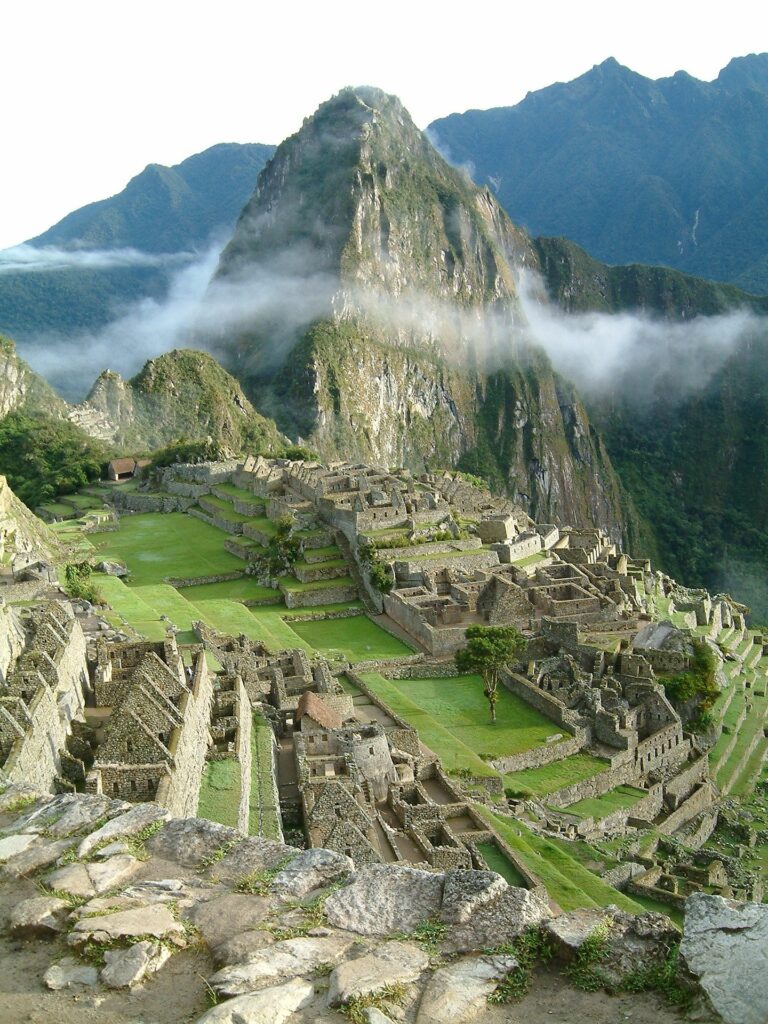
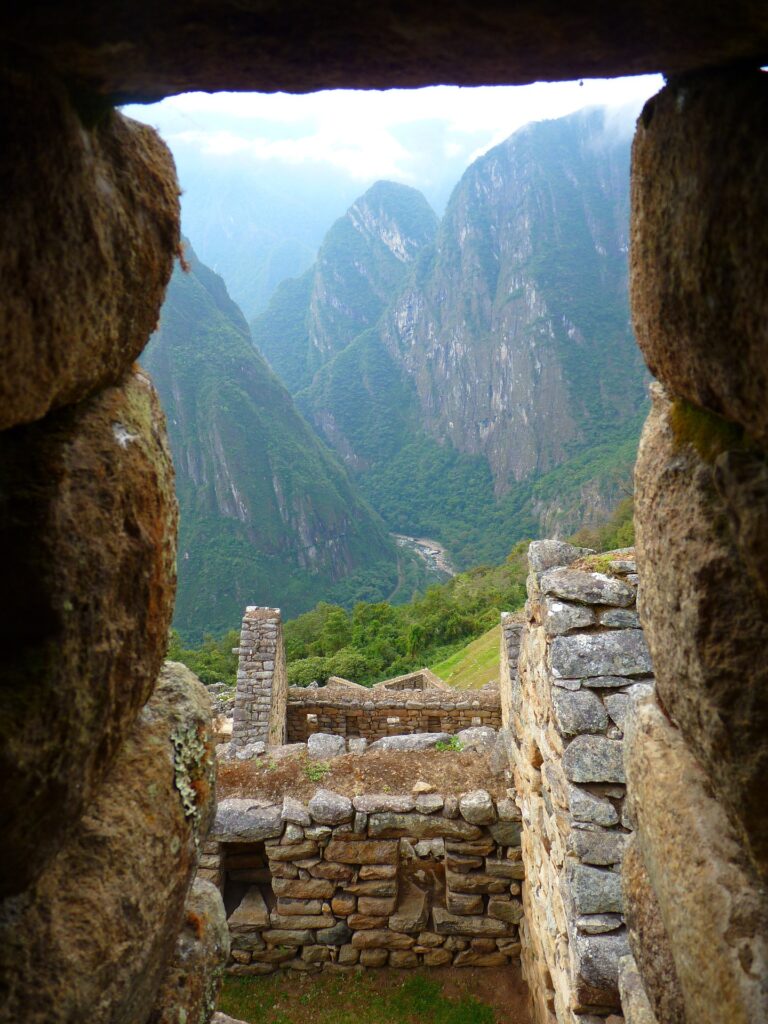
How to get to Machu Picchu?
The most common way to reach Machu Picchu is by train from Ollantaytambo or Poroy (near Cusco) to Aguas Calientes, followed by a short bus ride up the winding road or by climbing the stairs to the entrance of the site. Alternatively, you can hike the Inca Trail, which requires permits and several days of trekking.
Getting to Aguas Calientes :
Before reaching Machu Picchu itself, you’ll typically need to first arrive at Aguas Calientes, the town located at the base of the mountain where Machu Picchu is situated.
- Train: The most common way to reach Aguas Calientes is by train from Ollantaytambo or Poroy (near Cusco). Trains are operated by PeruRail and Inca Rail, offering different classes of service from budget to luxury. The journey provides scenic views of the Sacred Valley and takes approximately 1.5 to 3.5 hours, depending on the departure point.
- Hiking from Hydroelectric Station: For those seeking a budget-friendly option, you can take a train or bus to the Hydroelectric Station (a shorter journey than to Aguas Calientes) and then hike approximately 2-3 hours along the railway tracks to Aguas Calientes.
Climbing Stairs : The bus ride takes about 30 minutes along a steep and winding road. If you choose to hike, it’s a challenging uphill trek that takes approximately 1.5 to 2 hours, depending on your pace.
Trail to Machu Picchu :
- Inca Trail: This is the most famous hiking route to Machu Picchu and requires a permit, which should be booked well in advance due to popularity and limited availability. The classic Inca Trail typically takes 4 days and 3 nights, covering approximately 26 miles (42 kilometers) through stunning Andean landscapes, cloud forests, and ancient Incan ruins. The trail includes challenging sections with stone steps and altitude changes, culminating in the iconic Sun Gate (Inti Punku) overlooking Machu Picchu.
- Alternative Treks: There are several alternative treks that also lead to Machu Picchu, such as the Salkantay Trek, Lares Trek, and Choquequirao Trek. These routes offer different landscapes and experiences, ranging from challenging to moderate difficulty levels.
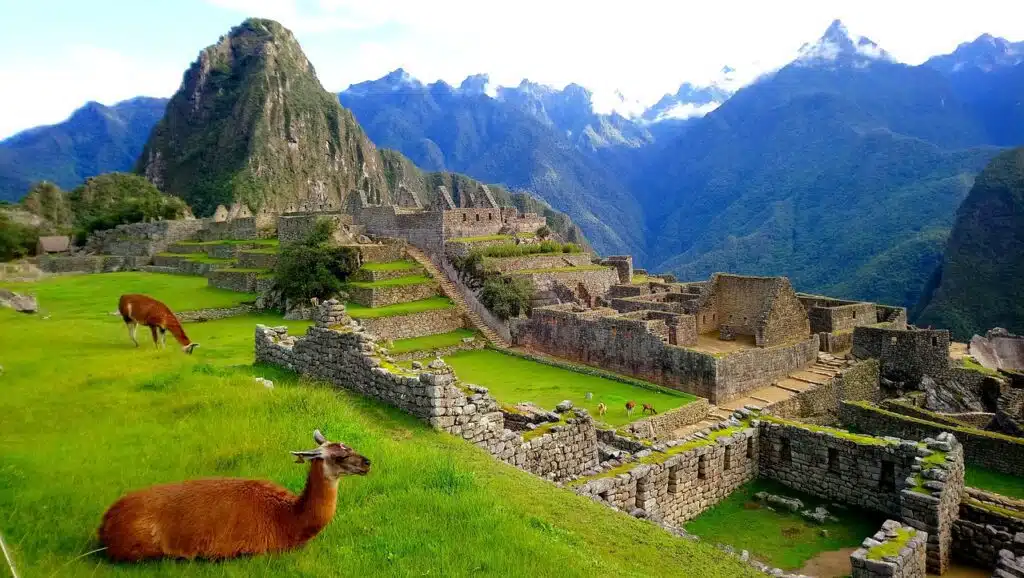
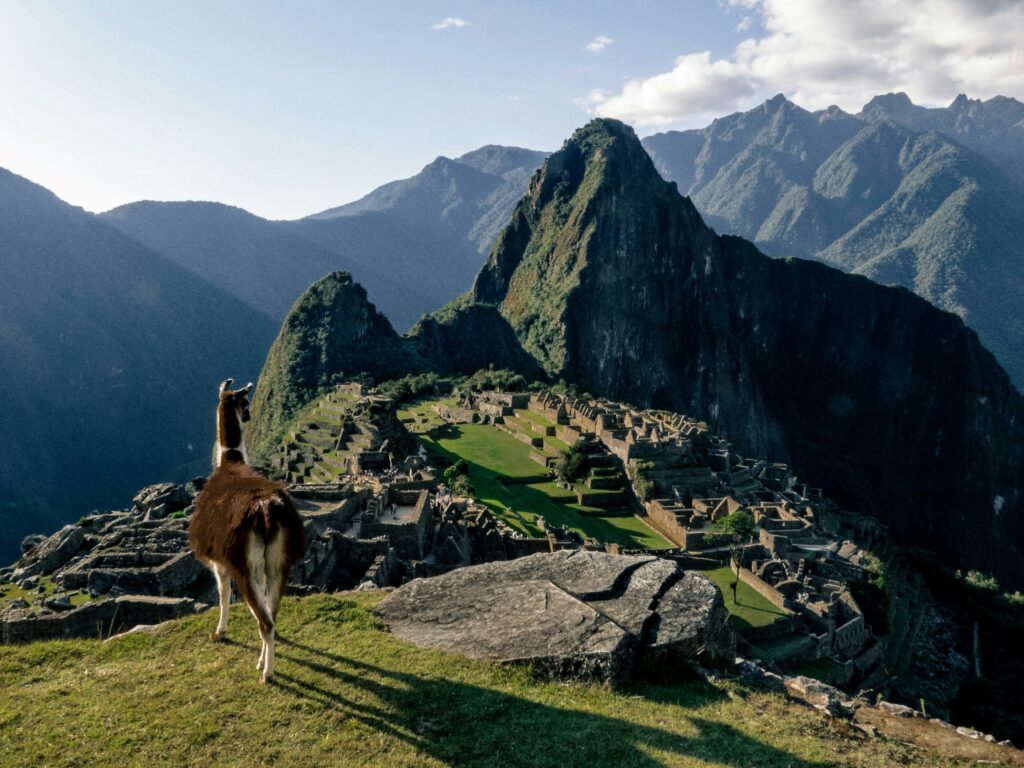
Tips for the visit
- Booking tickets : It’s essential to book your tickets in advance, especially if you plan to hike the Inca Trail or visit during the high season (May to September). Tickets are limited to help preserve the site, so securing yours early is advisable. Tickets for Machu Picchu can be purchased in person at the official ticket offices in Aguas Calientes. It is possible to buy them a day depending on availability but it is recommanded to plan ahead.
- Weather: The weather can be unpredictable, with fog and rain common, especially in the mornings. It’s advisable to bring layers, waterproof clothing, and sturdy walking shoes.
- Respect the Site: Machu Picchu is a UNESCO World Heritage site and requires visitors to respect the rules and regulations in place to preserve its integrity. Avoid touching or climbing on the ancient structures.
Visiting Machu Picchu is a once-in-a-lifetime experience for many travelers, offering not only incredible archaeological wonders but also stunning natural beauty amidst the Andes Mountains. Taking the time to prepare and understand the significance of this historic site will enhance your visit immeasurably.




